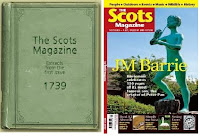Magazines are publications,
usually published on a regular schedule, containing a variety of articles or
reviews. They are generally financed by advertising,
a purchase price or pre-paid magazine subscriptions.
There are many different types of magazines, from weekly, monthly, quarterly
and annually. Magazines now come in a variety of genres, for specific areas,
interests, hobbies and lifestyles.
 |
| An example of the selection of magazines on sale. |
 |
| Format of magazine (click to enlarge) |
History
of magazines

In
1586, Josse Amman, a Swiss painter, published magazine on the fashions of the
day, with the title ‘Gynasceum sive,
Theatrum Mulierum’. It is thought to be the first fashion magazine. In 1693
John Dunton published ‘The Ladies Mercury’ a
periodical specifically for women, including an advice column. He later
published ‘The Athenian Mercury’
which audience was both men and women; it included articles on love,
religion, science etc. Although these are considered some of the earliest forms
of magazines, they are not as we know them now, there were rarely any pictures
or illustration, some could say it resembles what we would know as a newspaper
now.

 |
| The Scots magazine: Past and Present |
.
Music Magazines
During mid 19th Century, a number of music periodicals
emerged giving composers a chance to circulate their music to a large number of
other musicians and music fans. Publications such as
‘The Musician’, ‘Perry's Music
Magazine’and ‘The Echo’
were quite popular at the time, however most did not last long and
consequently. Possibly, one of the most well known US music publications from
that time is ‘The Etude’ published continuously by Theodore Presser & Co.
from 1883 till 1954.
<><><><><><><><>
<><><><><><><><>
 |
| The Etude through time (1883, 1921 and 1954). |
Evolution
of the composition
 Just from these examples, we can see how music magazines in
particular have stared to evolve, first, starting with simple, text based
cover, with possibly a few embellishments around the side. Later, we see one central
image, on a simple cover, and finally, in the last year of
production, here, we see a central image, taglines and
mention of other featured articles.
Just from these examples, we can see how music magazines in
particular have stared to evolve, first, starting with simple, text based
cover, with possibly a few embellishments around the side. Later, we see one central
image, on a simple cover, and finally, in the last year of
production, here, we see a central image, taglines and
mention of other featured articles.
Since then, music magazines have become more adventurous with
their composition,
and colour
palette. A good example of this is New Musical Express (NME).
NME is a popular music publication in the UK. Published weekly since March
1952. In the 1970's it became the best selling British music magazine.
At first their composition is once again resembling a newspaper,
later on their look evolves to a central image, with a mention of the main
featured article.
Later on, in the late eighties and early nineties, NME become more
experimental with their composition, including more than one image, flashes
and other featured
articles. Now, in the in the 'noughties' and 'teens', NME are
aware of of how much of a popular established brand they are; they feel
comfortable enough to change their well-known iconic red masthead
to other colours some weeks to better suit the colour palettes of
that cover.
Publishers
For example, one of the
biggest magazine publishes is the worldwide Bauer Media Group based in Hamburg,
Germany. Founded in 1875, they operate in 15 countries. They work in publishing
print and digital magazines. Worldwide circulation of Bauer Media Group's magazine
titles amounts to 38 million magazines a week.
 At the beginning of 2008,
Bauer expanded its portfolio by acquiring Emap’s Radio and Consumer Magazine
divisions and changed the name of these new UK businesses to Bauer Media.
At the beginning of 2008,
Bauer expanded its portfolio by acquiring Emap’s Radio and Consumer Magazine
divisions and changed the name of these new UK businesses to Bauer Media.  With the recent addition
of the former Emap Consumer Media titles, Bauer is now the largest consumer
magazine publishing company in the UK, playing a primary role in the Women’s
Weeklies, Women’s Interest, Women’s Lifestyle, TV Listings, Puzzles, Men’s
Lifestyle, Music & Film and Specialist magazine markets.
With the recent addition
of the former Emap Consumer Media titles, Bauer is now the largest consumer
magazine publishing company in the UK, playing a primary role in the Women’s
Weeklies, Women’s Interest, Women’s Lifestyle, TV Listings, Puzzles, Men’s
Lifestyle, Music & Film and Specialist magazine markets.They publish magazines varying from the likes of Bella, Zoo, Kerrang, Classic Bike, Closer and many more.

Another notable publisher is UK based company, IPC Media (formerly International Publishing Corporation) is a consumer magazine and digital, with a large portfolio selling over 350 million copies each year. It was founded in 1958 and is based in London. It produces magazines for what they see as three audiences; men, mass market women and up market women. It splits into suitable groups of publishing; IPC Inspire, Connect and Southbank.
 Their portfolio IPC
Inspire comprises a wealth of leisure brands aimed at men including Country Life, Horse & Hound, Rugby
World and Decanter, as
well as lifestyle brands including Nuts, Mousebreaker and NME.
Their portfolio IPC
Inspire comprises a wealth of leisure brands aimed at men including Country Life, Horse & Hound, Rugby
World and Decanter, as
well as lifestyle brands including Nuts, Mousebreaker and NME. 
Whereas IPC Connect (their division aimed at mass market women) comprises well known women's weeklies including Look, Now, Chat and TV entertainment brands including What's on TV, TVTimes and TV & Satellite Week.
And lastly, IPC Southbank, caters for their audiences of upmarket women comprises of luxury fashion brands including Marie Claire and InStyle, lifestyle brands including woman&home and essentials and home interest brands including Ideal Home, Livingetc and housetohome.




No comments:
Post a Comment